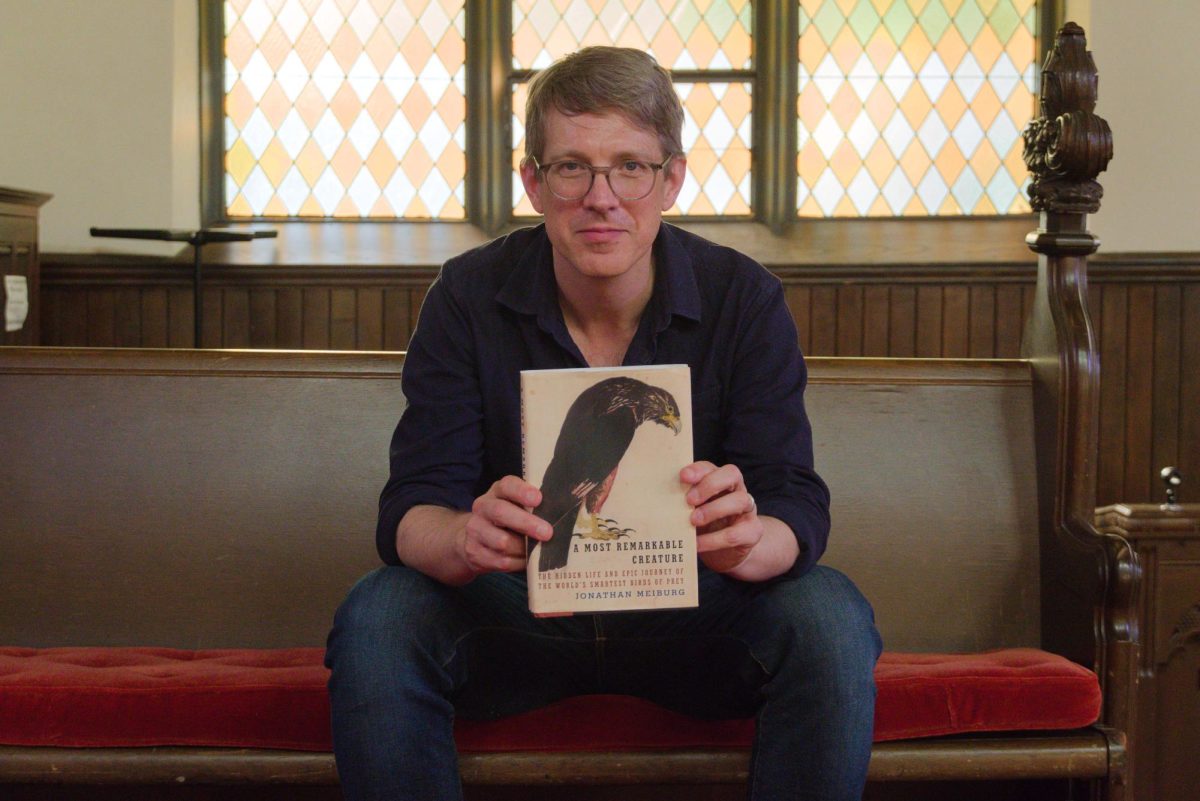Snowmine, an indie pop band from Brooklyn, came to Gardner Friday night. As usual, the show would not have been possible without SGA Concerts, and their hard work paid off as Snowmine gave the crowded room a great show of musical depth and light-show fantasia.
For fans of bands like Local Natives or Neon Indian, the concert hit a sweet spot. Snowmine plays tenderly-crafted indie pop music, and although its stuff sounds tame on record, in live performances it pumps up the volume tremendously. It brought on brilliant synchronization with lights, and each song saw the band committing its all.
During one of the first few songs, aware that its audience was stuck in the sidestepping-sway that plagues many indie-pop audiences, the singer demanded that the audience jump right when the beat dropped.
The energy that followed seemed to burst straight out of the type of world where the wild things are: ambient and dreamy, yet made tangible by the raw energy the band brought. Many Grinnellians were as enthusiastic, with the front row a swarming mass of shoegazing and head bopping.
It made the music something you could lose yourself in. And indeed, some Grinnellians did.
“I follow Snowmine religiously, and it’s a dream come true to see them live. The way they just trust their musical instincts is so inspiring. Loved it!” said Allie Walker ’15.
Although its music was good, the band did not make much of an effort to connect with the audience, which is nearly always a staple in a venue as intimate as Gardner. This may have been brought on by sound issues, which disrupted the band’s flow now and then, but Snowmine pushed through any technical difficulties to keep the band sutured into its rich electro-acoustic soundscapes.

The Office of Intercultural Engagement and Leadership brought Dr. Jesus “Chuy” Negrete, a well-traveled Mexican folk-singer, to JRC 101 last Friday. Negrete sat, harmonica brace strapped and guitar in hand, in front of a small crowd before humbly asking the audience to stand up and salute the four cardinal directions while saluting the four elements: fire, earth, water and air, in Spanish.
It was a surreal moment in a room usually dominated by decorum and formality, to perform such a ritual. Yet that was just the beginning of Negrete’s passionate performance, one in which he sought to actively engage the audience and broaden their view of American history and culture.
“How can I begin to express to you what America means to la raza? It means that we were Americanos before the name America had ever existed,” Negrete sang.
This was to be just the start of Negrete’s corrido epic about the experience of Mexican-Americans, and a taste of the Spanglish (English mixed in with Spanish), humor and political-historical resonance of his performance. Even the form of his storytelling was steeped in history, as Negrete explained that corrido came from the Spanish word for run and that the songs were meant as a way to keep one’s history intact while traveling.
Traveling was a constant motif through Negrete’s work, as he detailed the passages Mexican-Americans took while traversing an alternate timeline of America. Negrete’s performance spanned almost a century of history, a hefty task to complete in less than an hour, but his gift for weaving mythology, folklore and history gave the story flesh and blood.
While showing a picture of Mexican-Americans in Kansas in the early twentieth century, Negrete introduced one of the key ways he had the audience participate during the performance, by using a call and response format.
“I need a grito. That’s a shout. Not the sad type of grito your tío, your uncle, does when he’s drunk. A grito that you do because it calls your name,” Negrete said, and then proceeded to demonstrate as he emitted a small yelp, a grito, which a couple of enthusiastic concert-goers reiterated back to him.
Along with the cultural resonances of Mexican-American history, he also detailed passages of immigration and the troublesome history of the border between the United States and Mexico. Negrete tied together travel to Mexico with the debt-peonage system of Mexico, which kept workers landless and impoverished.
Yet, throughout this historical oratory, Negrete included a humorous monologue detailing the love affairs, familial disputes and cultural acclimation that his own grandfathers and uncles had to deal with. Whether these were based in fact or fiction, Negrete’s corridos recalled history with irreverent character that turned it from textbook to real life, into a story that came alive with its retelling.


















































